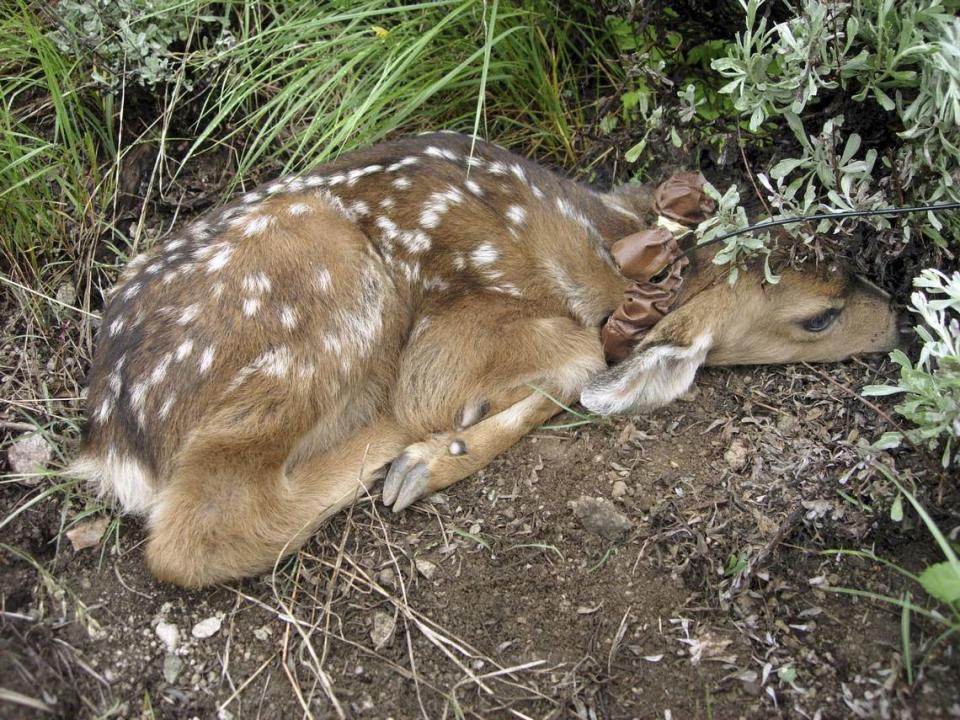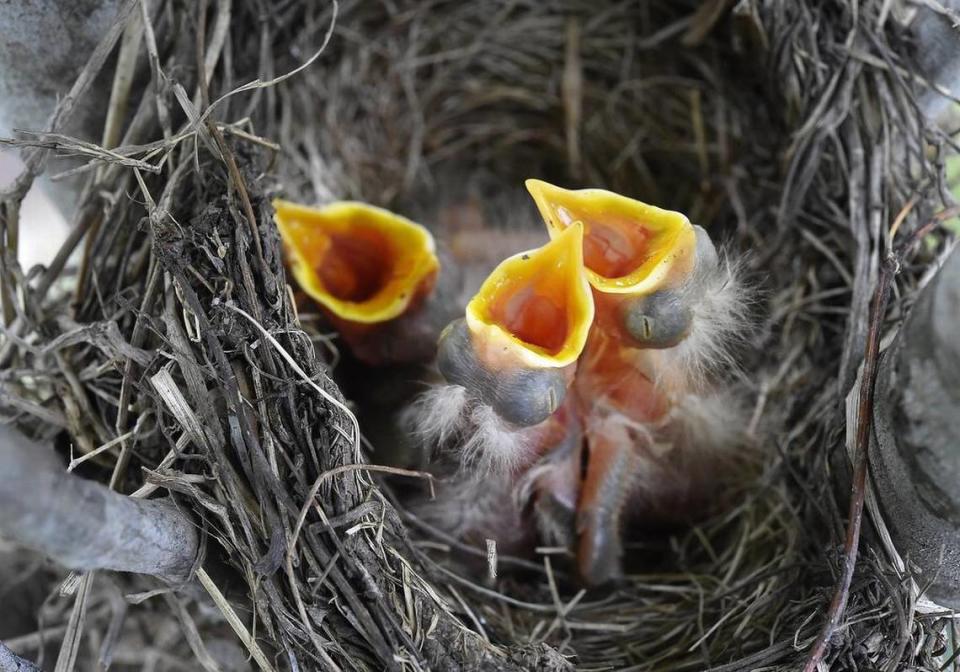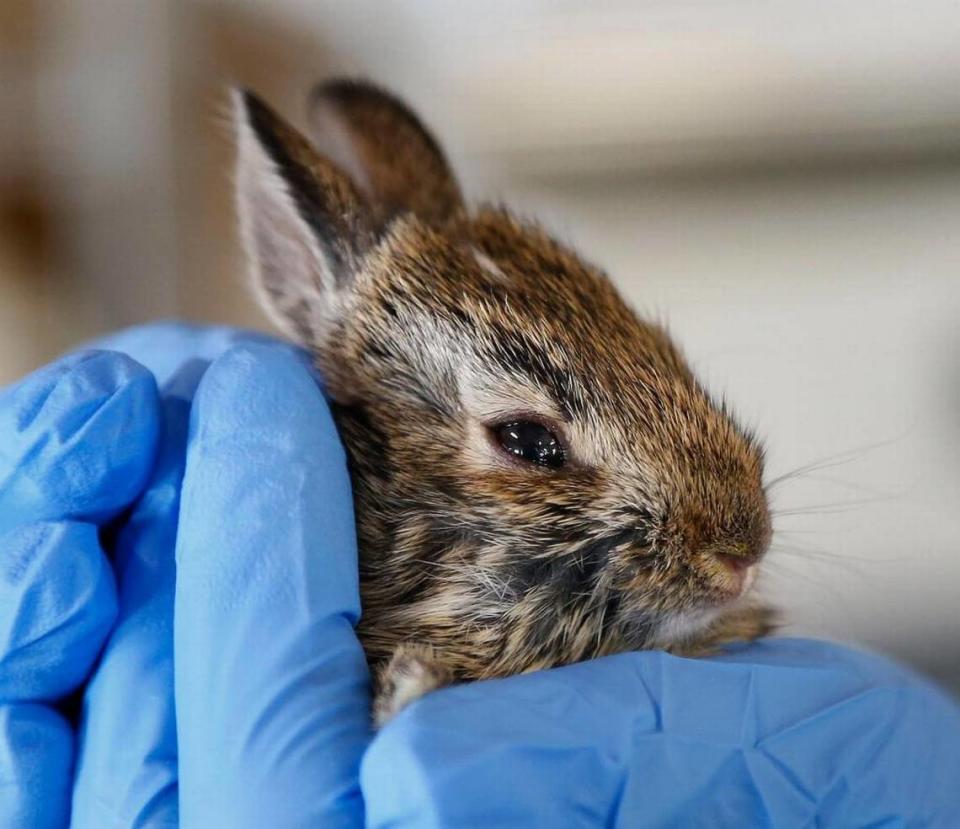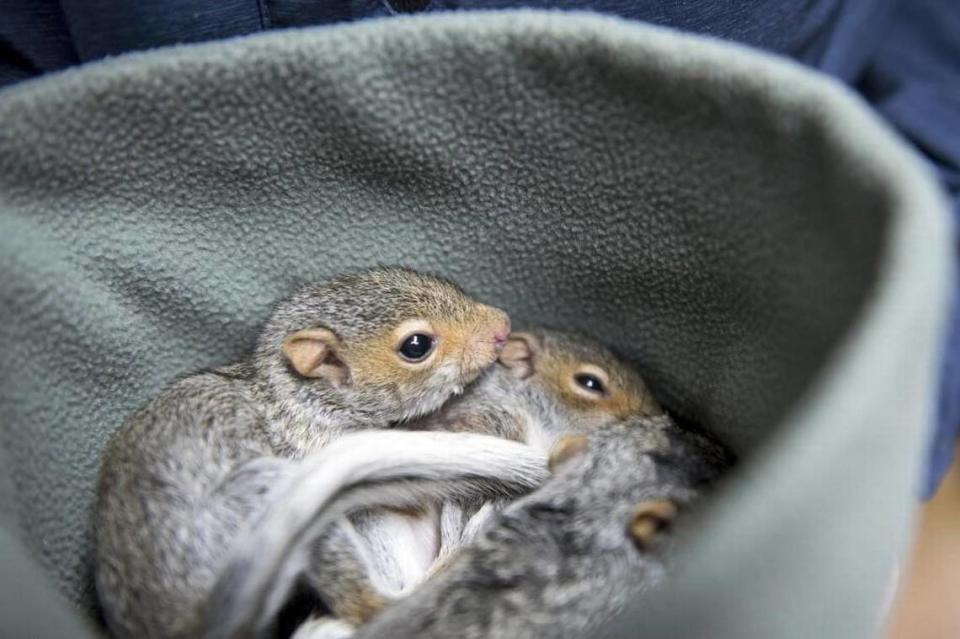How do you care for lost wild baby animals in KY? You don’t. Call these experts instead
Picture this: You’re out for a walk around the block with your family, taking in the fresh air and bright-colored blooms of spring. That’s when your child alerts you to a baby bird that has fallen from its nest or maybe a spotted fawn furtively hiding in the tall grass.
Your first instinct is to rescue it, maybe drive it to your veterinarian’s office or even take it home. But, according to animal welfare experts and organizations, you should fight this impulse.
Instead, ask yourself, “Does this animal need rescuing?”
Some species fiercely watch over their young, while others stash them out of plain sight so they can go feed or check on other offspring. Here’s what to know about wildlife services in Kentucky and some basics on common critters you might run into.
How to find a licensed wildlife rehabilitation service in Kentucky
In Kentucky, there are no government agencies that provide wildlife rehabilitation services.
That’s according to Jason Nally, who directs the Bluegrass regional branch of the Kentucky Department of Fish and Wildlife.
“All of those are done by private individuals,” Nally said.
The state does play a role in licensing wildlife rehabilitators, however. According to Nally, you should make sure you’re bringing injured or abandoned wildlife to qualified rehabilitators who can properly care for these animals.
The state Department of Fish and Wildlife maintains this list of qualified rehabilitators, but some providers in Central Kentucky counties include the following:
Critter By Critter takes mammals in Fayette County: Kimberly Burrism, 859-351-9258
Enchanted Forest Widlife Rescue takes mammals, amphibians and reptiles in Fayette County: Mark and Patricia Blankenship, 859-809-3397
Brook’s Bend Wildlife Rehabilitation takes mammals in Jessamine County: Betsy Waters, 859-338-4784
Wolf Run takes mammals in Jessamine County: Mary Kindred, 859-227-8650
Central Kentucky Wildlife Hospital takes mammals, reptiles and amphibians in Madison County: Kevin Simmons, 859-813-5241
What to know about deer, birds, rabbits and squirrels
Fawns

When you first encounter a baby wild animal that appears to be alone, you should act under the assumption its parent is somewhere nearby — unless the animal is injured or something else is wrong, Nally said.
This is especially true for fawns, which are young deer in their first year of life.
It’s common for a female deer, called a doe, to stash her fawns in sheltered areas to keep them safe. The doe will then leave to feed and return later to nurse them. There’s a good chance she’s somewhere nearby, and she won’t return until you’ve left the area, Nally said.
Fawns don’t have a particularly strong scent and their coloring, white spots on their brown backs, make for excellent camouflage in tall grass or brush. In most cases, the fawn will rest calmly and quietly to wait for its mother to return.
When it comes to protecting their young from predators, deer follow the old proverb: “Don’t put all your eggs in one basket,” Nally said.
But what if you find the mother dead somewhere nearby? You might discover the fawn wandering about and crying endlessly all day, according to the Humane Society of the United States.
In that case, you should contact a licensed wildlife rehabilitator. Don’t try to care for the fawn yourself, Nally said. Most people don’t understand their nutritional needs and can’t meet them.
Instead, Nally recommends contacting a professional.
Baby birds and fledglings

It’s a myth birds will abandon their young if a human touches them. Still, you should only intervene if the baby birds are clearly injured or in immediate danger. In that case, contact a wildlife rehabilitator.
Otherwise, if the bird is featherless or only has a few feathers and appears to have fallen from its nest, place it back if you can reach it.
If the bird does have feathers, it may be a fledgling. It is normal to find them on the ground. These adolescent birds hop along the ground for a few days as they learn to fly.
Baby rabbits

If you spot a baby bunny with open eyes, raised ears and it appears to hop well, leave it be. It can fend for itself.
If you discover baby rabbits — likely in a nest like that will look like a patch of dead grass — leave them alone, keep all pets out of the area and avoid touching them. It’s generally best to minimize contact with them.
The Humane Society suggests making a tic-tac-toe pattern out of yarn or string around the nest. Check back again in 24 hours. If the yarn was moved aside, but the nest is still covered with fur, grass or leaves, the mother came back to nurse her babies. If the pattern remains undisturbed, contact a wildlife rehabilitator.
Baby squirrels

According to the Humane Society, you’ll notice if a juvenile squirrel needs help if it regularly approaches and follows people. In that case, the mother is likely gone and the baby is very hungry and in need of care.
You can make a temporary shelter from a shoebox with bedding inside, along with a heat source, like a hot water bottle on a low setting.
Make sure the baby is getting the right amount of heat, and call a wildlife rehabilitation service immediately.
Do you have a question about critters in Kentucky for our service journalism team? We’d like to hear from you. Fill out our Know Your Kentucky form or email ask@herald-leader.com.

